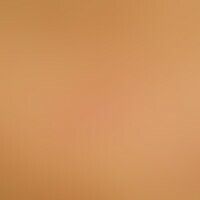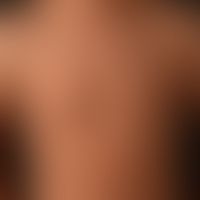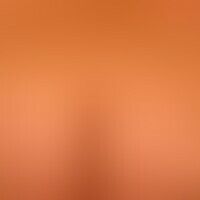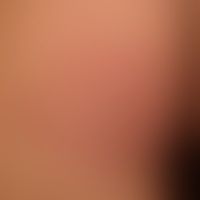Image diagnoses for "Torso"
551 results with 2173 images
Results forTorso

Lupus erythematosus acute-cutaneous L93.1
lupus erythematosus acute-cutaneous: clinical picture known for several years, occurring within 14 days, at the time of admission still with intermittent course. anular pattern. in the current intermittent phase fatigue and exhaustion. ANA 1:160; anti-Ro/SSA antibodies positive. DIF: LE - typical.

Steroid acne L70.8

Basal cell carcinoma (overview) C44.-
basal cell carcinoma superficial. eczema-like aspect. only in the marginal area a smooth shiny seam can be detected when enlarged. this seam is the diagnostic "signal" of the superficial basal cell carcinoma and can be "emphasized" by stretching the surrounding skin.

Keratosis lichenoides chronica L85.8
Keratosis lichenoides chronica: Generalized exanthema of scaly, lichenoid papules in a linear arrangement.

Prurigo gestationis O99.75
Prurigo gestationis: 32-year-old female patient in the 6th month of pregnancy with increasing, severe itching, pruriginous rash; fresh effglorescence is not detectable, only scratched papules.

Syphilide, ulcerous A51.3
Syphilis: multiple papular or papulo-necrotic, painless syphilis II, untreated!

Extrinsic skin aging L98.8
Chronic photo-ageing of the skin: moderately pronounced photo-ageing of the skin; in addition to an extensive base tan, irregularly configured pigment spots; further splashes of depigmentation.

Pityriasis rosea L42
Pityriasis rosea: discreet macular or plaque-shaped exanthema with tender red spots and plaques arranged in the cleft lines.

Neurofibromatosis (overview) Q85.0
type i neurofibromatosis, peripheral type or classic cutaneous form. numerous smaller and larger soft papules and aques. several café-au-lait spots.

Angiodysplasia Q87.8

Keratosis seborrhoeic (overview) L82

Tinea corporis B35.4
Tinea corporis:unusually extensive, large-area tinea corporis in known HIV infection.

Lichen sclerosus extragenital L90.0
Lichen sclerosus extragenitaler: Diffuse, veil-like, only slightly consistency increased sclerosis of the skin, in case of less inflammatory Lichen sclerosus.

Atrophy of the skin (overview)
Atrophy. striae cutis distensae.53-year-old patient who has been treated externally and internally with glucocorticoids for one year. striae cutis distensae without subjective symptoms. 2-3 mm wide flat atrophic lesions running in transverse direction to the skin tension with a parchment-like surface. the red tone is caused by the rupture of the connective tissue and atrophy of the surface so that vessels can shine through.

Granuloma anulare disseminatum L92.0

Graft-versus-host disease chronic L99.2-
Generalized GVHD: chronic, generalized, poikilodermatic skin changes, with circumscribed calluses, atrophy and reticular hyperpigmentation.








